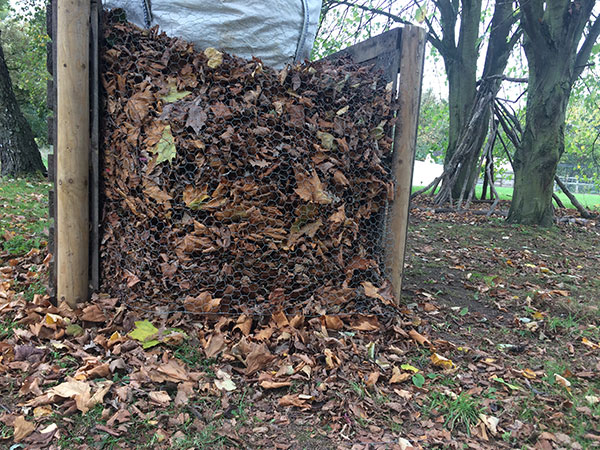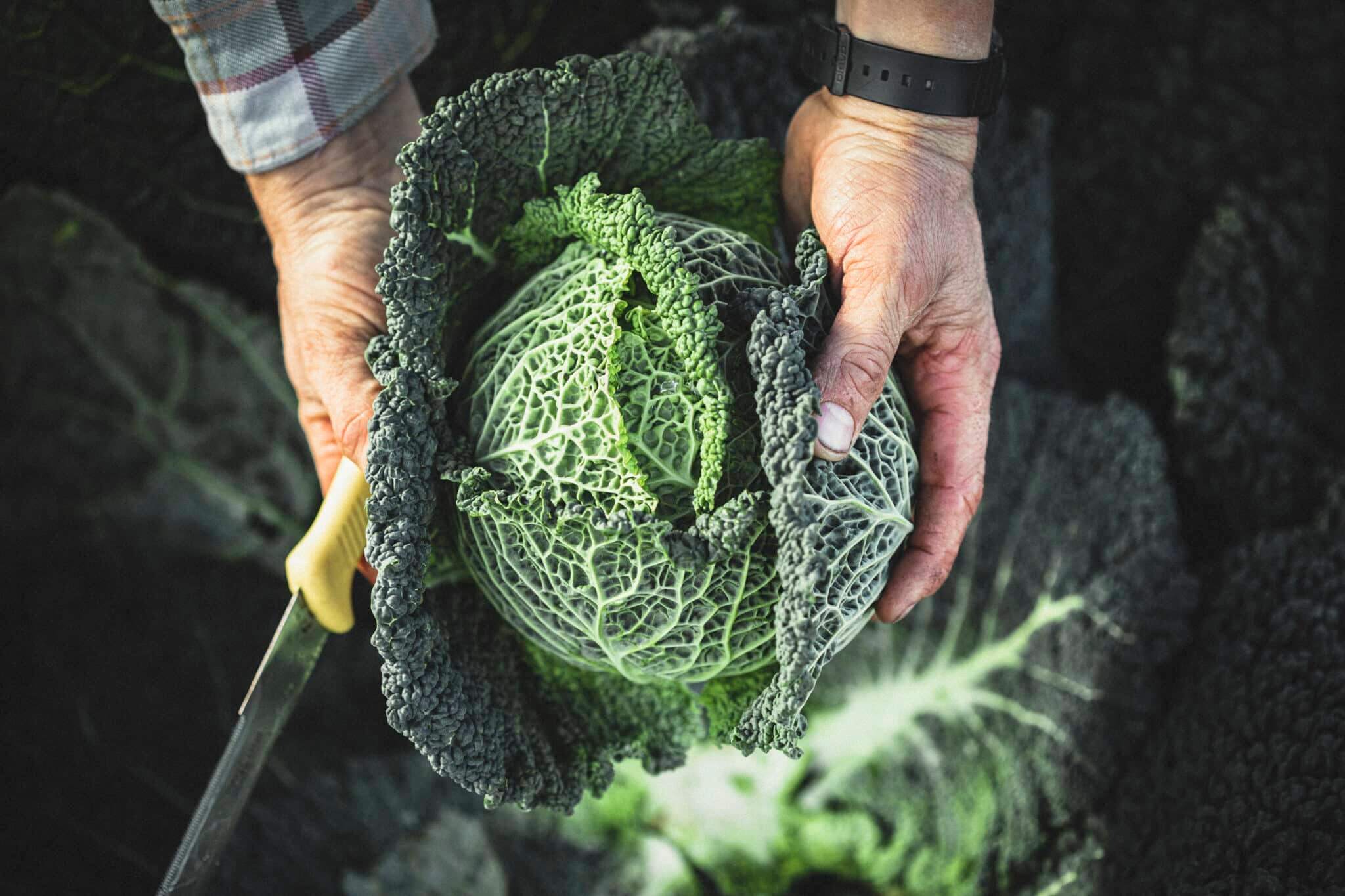Sometimes nature is just so generous to us gardeners. Take autumn leaves for example. Copious in number (estimates vary from 200,000 to a million leaves on a mature oak), free falling (no need to use ladders or tools to pick) and easy to gather up and store (a rake and a bag is all you need.) And what do you get? One of the best soil improvers. For free.
Leafmould – like homemade compost – is one of the organic gardener’s dark, but golden secrets. It will feed the soil micro life, which in turn will release nutrients, and create a perfect soil structure.
Leafmould also protects the soil. Used as a mulch, it will cover winter soils to protect them from extreme weather, such as heavy rains which can wash out valuable nutrients. Conversely, in summer the mulch will keep moisture in, and have the added bonus of suppressing weeds.
And finally, you can use leafmould as a perfect medium for making your own (free) potting mixes.
How do I make leafmould?
It’s as easy as 1,2,3. One, collect fallen autumn leaves. Two, pack them while damp into a container – a reusable bin bag or a wireframe. Three, leave them for a year or two. They will break down into a lovely dark brown mix, not unlike garden compost.
Reuse old builders’ materials bags. Or all those spare ‘bags for life’. Or if you really want to cut out the plastic, make a heap. Either contain it within woven spent runner bean plants, or get creative with chicken wire and posts. Keeping the leaves moist is important, and don’t forget to pierce the bags to make air holes.
Now it’s time to be patient. It will take up to two years for the leaves to quietly degrade. But the wait will be worth it.

How do I use leafmould?
Young leafmould (one or two years old) is when leaves have begun to break up and it’s easily crumbled in the hand. You can use it as
– Winter cover for bare soil.
– A summer mulch around shrubs, herbaceous, trees, vegetables.
– Dig in as soil improver for sowing and planting, especially if your soil is heavy to help with drainage
– Autumn top dressing for lawns. This will keep the soil micro life under the grass well fed. They in turn will help create a healthy well-drained soil for the grass roots to thrive.
Well-rotted leafmould (at least two years old) is dark brown crumbly material, with no real trace of original leaves visible. Use it to add to
– A seed sowing mix – either well-sieved leafmould on its own, or mixed with equal parts sharp sand. This makes the perfect low nutrient, fine-structured medium to help seed germination.
– A homemade potting compost – mix equal parts well-rotted leafmould, sharp sand, loam (soil) and garden compost to give your potted plants a healthy well-structured mix to grow in.
Where do I get the leaves from?
Parks. Your own garden. Or a friendly neighbour’s.
Don’t collect from woodlands. Fallen leaves are an important part of the natural cycle, providing nutrition as well as habitat for woodland creatures. It’s also important to leave them under hedges. Not only are they good for the soil which feeds the hedge, but hedgehogs may be hibernating there.

And here’s the science behind it all
Autumn leaves are rotted down mainly by the slow, cool action of fungi, rather than the quicker acting bacteria that work in a compost heap. This is why autumn leaves in quantity are best recycled separately in a leafmould heap. They won’t hinder the speedy aerobic breakdown of your homemade compost.
Leaves contain up to 80 per cent of the nutrients picked up by a tree. However, as they die, most of these nutrients are reabsorbed by the tree. What remains in the leaf is an important substance called lignin, which is the fibre in the leaf’s cell structure, and is slow to break down. This means some leaves, which are higher in lignin, are slower to rot than others. It’s useful to know your leaves so you know how long to expect the rotting process to take.
Leaves that are higher in lignin and lower in nitrogen and calcium include beech, birch, hornbeam, oak, sweet chestnut and magnolia.
Leaves that are lower in lignin and higher in calcium and nitrogen include ash, cherry, elm, linden, maple, poplar and willow.
Mowing over your leaves on the lawn is a great idea. Not only are you breaking the leaf down, which speeds it decay, but by mixing grass cuttings with the leaves you will increase the nitrate content of the leafmould, which will help your plants grow.
Free grass cuttings, free leaves. Thank you, Mother Nature.
The Grow Your Own Wicked Leeks series is written by Garden Organic, the national charity for organic growing.
Each month we bring you timely advice on what to do in your organic patch. We hope they inspire you on your organic growing journey, whether you’re an experienced grower or just starting out. Share your own tips and gardening photos on social media under #GYOWickedLeeks.













Surely a well made compost heap undergoes aerobic decay? Anaerobic processes lead to foul smells.
Hi Richard, You are absolutely right. Compost is an aerobic process. Bad typo on my part, which I will get changed asap. Thanks!
SB